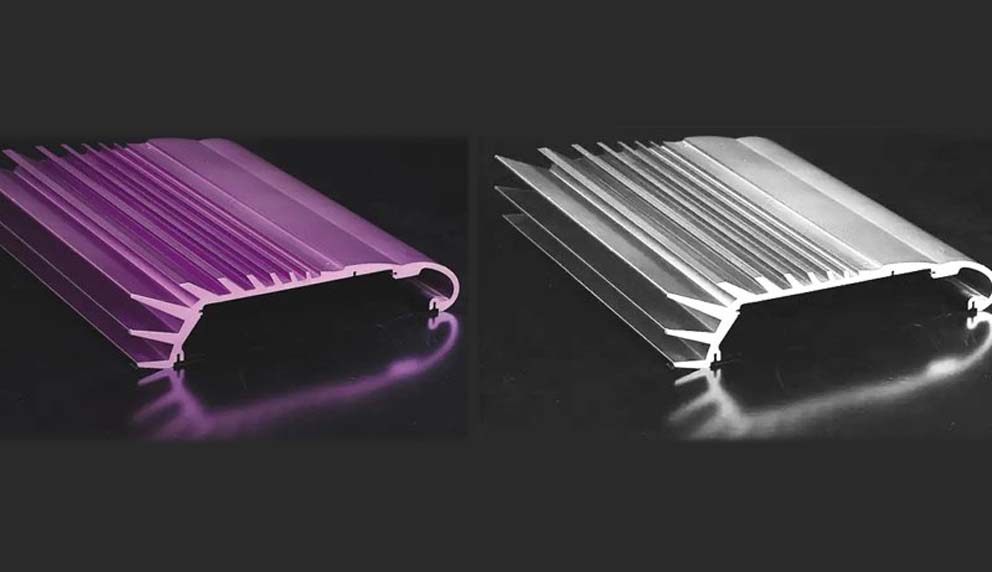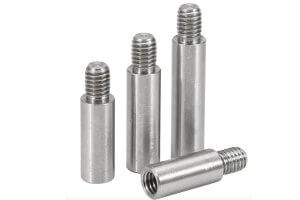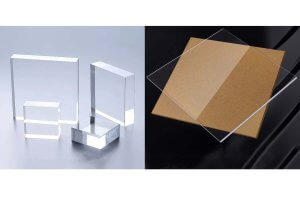Introduction: The Appeal of Titanium Color in CNC Machining
Titanium has always fascinated industries for its lightweight yet strong properties, but its natural titanium color adds an extra layer of allure. With its silver-gray metallic finish and the ability to display vibrant hues through anodization, titanium color is a cornerstone for both functional and aesthetic applications. This dual appeal has made titanium an essential material in fields ranging from aerospace to luxury goods.
In my own experience working on titanium components, maintaining or enhancing the titanium color during CNC machining was often a key priority. A flawless titanium finish not only elevates the product’s appeal but also ensures it meets rigorous performance requirements. In this article, we’ll delve into the relationship between titanium color and CNC machining, explore challenges, and discuss techniques to bring out the best in this remarkable material.
What Is Titanium Color and How Is It Formed?
The term titanium color generally refers to the natural grayish-silver hue of titanium metal. However, it can also encompass the vivid colors achieved through surface treatments like anodization.
Natural Titanium Color:
- Characteristics: The raw titanium color is smooth, metallic, and corrosion-resistant. Its minimal reflectivity makes it ideal for functional applications where discretion is necessary, such as medical implants or aerospace parts.
- Chemical Composition: The natural color is a result of the native oxide layer formed on titanium’s surface, providing inherent protection against corrosion.
Anodized Titanium Color:
- Process: Anodization uses an electrochemical process to thicken the oxide layer on titanium’s surface. By controlling the voltage, manufacturers can achieve colors ranging from blue and green to gold and purple.
- Color Mechanism: These colors are not dyes but result from light interference within the oxide layer. The thickness of this layer determines the wavelength of light reflected, producing vibrant hues.
Here’s a table summarizing key aspects of natural and anodized titanium color:
| Feature | Natural Titanium Color | Anodized Titanium Color |
|---|---|---|
| Appearance | Grayish-silver, matte or polished | Wide range of vibrant colors |
| Corrosion Resistance | High | Enhanced |
| Durability | Very durable | Durable but depends on application |
| Applications | Aerospace, medical, industrial | Jewelry, electronics, luxury goods |
Understanding these fundamentals helps us appreciate why preserving or enhancing titanium color is critical in CNC machining.
Challenges in Preserving Titanium Color During CNC Machining
CNC machining is an essential process for creating precision titanium components, but it introduces challenges in maintaining the titanium color. Some common issues include:
- Surface Damage:
High cutting speeds or improper tool selection can cause scratches or micro-fractures on the titanium surface, dulling its natural sheen.
Heat generation during machining can alter the oxide layer, leading to discoloration or uneven finishes. - Tool Wear:
Titanium’s high strength and low thermal conductivity can cause rapid wear of cutting tools. This wear increases surface imperfections, affecting both the texture and color. - Oxidation Changes:
When exposed to high temperatures during machining, titanium may develop uneven oxidation, resulting in color inconsistencies. - Coolant Contamination:
Using inappropriate coolants or failing to maintain cleanliness can leave residue that affects surface quality and color.
During a recent project involving CNC machining of titanium smartphone cases, I encountered issues with heat discoloration. By optimizing the cutting speed and employing high-quality carbide tools, we mitigated the problem and preserved the desired titanium finish.
CNC Techniques for Titanium Color Optimization
To ensure titanium color remains pristine during CNC machining, certain strategies and techniques can be employed:
1. Tool Selection:
Use carbide tools or diamond-coated tools to withstand titanium’s hardness and minimize wear.
Employ sharp tools to reduce friction and avoid surface damage.
2. Cutting Parameters:
Maintain moderate cutting speeds and feed rates to reduce heat buildup.
Use shallow cuts to minimize tool pressure and surface deformation.
3. Coolant Usage:
Apply high-performance coolants specifically designed for titanium. Flood cooling is recommended to dissipate heat effectively.
Avoid using old or contaminated coolants to maintain surface cleanliness.
4. Machining Environment:
Ensure a clean machining environment to prevent contamination that could affect the titanium finish.
5. Post-Machining Treatments:
For natural titanium, light polishing can restore its original luster.
For anodized titanium, avoid aggressive treatments that might strip the oxide layer.
Here’s a table outlining recommended CNC settings for titanium machining:
| Parameter | Recommendation |
|---|---|
| Cutting Speed | 30–60 m/min |
| Feed Rate | 0.1–0.3 mm/rev |
| Depth of Cut | 0.5–2.5 mm |
| Coolant | High-performance water-soluble type |
| Tool Material | Carbide or diamond-coated |
These practices not only preserve titanium’s color but also improve the overall quality of the machined parts.
Surface Treatments That Enhance Titanium Color
Beyond machining, surface treatments can amplify titanium color and make components visually striking:
- Anodization:
Creates vibrant colors like blue, purple, and gold. Ideal for decorative applications in jewelry or electronics.
Requires precise voltage control to achieve uniform colors. - Polishing and Buffing:
Enhances the natural metallic sheen of titanium, making it suitable for premium products. - Sandblasting:
Produces a matte finish that softens the reflectivity of titanium color, often used in industrial parts. - PVD Coating (Physical Vapor Deposition):
Adds a durable layer of color while improving scratch resistance.
These treatments are widely used in industries like luxury goods and medical devices to achieve specific aesthetic or functional goals.
Tools and Technologies for Titanium Color Precision in CNC
Precision is paramount when machining titanium, especially when the natural or anodized titanium color must be preserved. Advances in CNC tools and technologies have made it possible to achieve superior results, even with titanium’s challenging properties.
1. Specialized CNC Tools for Titanium
- Carbide Tools:
Preferred for their hardness and wear resistance.
Effective in reducing heat generation and surface damage. - Diamond-Coated Tools:
Provide superior cutting performance and minimize tool wear.
Ideal for finishing operations where surface quality directly impacts titanium color. - High-Speed Steel (HSS) Tools:
Suitable for softer grades of titanium or lower machining speeds. - Multi-Flute End Mills:
Allow smoother finishes, essential for applications where the titanium color is critical, such as luxury goods or medical devices.
2. Technologies Supporting Titanium Color Preservation
- High-Speed Machining (HSM):
Reduces machining time and minimizes heat buildup, ensuring a consistent titanium color.
Ideal for delicate applications like aerospace components. - Toolpath Optimization with CAM Software:
Generates precise toolpaths to reduce unnecessary passes, preserving the integrity of the titanium surface. - Advanced Cooling Systems:
Flood cooling or Minimum Quantity Lubrication (MQL) systems are essential to control heat and maintain surface quality. - Vibration-Dampened Tool Holders:
Prevent chatter and ensure smooth finishes, which are crucial for maintaining the visual appeal of titanium color.
Here’s a comparison of common tools and their suitability for titanium machining:
| Tool Type | Performance in Titanium Machining | Impact on Titanium Color |
|---|---|---|
| Carbide Tools | High | Preserves color with minimal wear |
| Diamond-Coated Tools | Excellent | Exceptional for surface quality |
| High-Speed Steel (HSS) | Moderate | Requires slower speeds to avoid discoloration |
| Multi-Flute End Mills | Very High | Produces smooth finishes |
3. Real-World Example
In a recent project machining titanium components for high-end wristwatches, we used diamond-coated tools and optimized CAM toolpaths. This approach ensured that each piece retained its vibrant anodized titanium color without compromising dimensional accuracy.
Applications of Titanium Color in Different Industries
Titanium’s strength, corrosion resistance, and unique color have made it a favorite in industries where aesthetics meet functionality.
1. Medical Industry
- Applications:
Surgical instruments, implants, and prosthetics.
Color coding via anodization simplifies surgical identification. - Example:
A client required anodized titanium bone screws in distinct colors to streamline surgical procedures. CNC machining ensured precision, while anodization provided the required hues.
2. Aerospace
- Applications:
Lightweight yet durable components like engine parts and structural fasteners.
Titanium color enhances corrosion resistance, especially in anodized parts. - Example:
We produced titanium fasteners for an aerospace client, ensuring the natural titanium color remained intact to meet performance and aesthetic standards.
3. Luxury Goods
- Applications:
Watches, jewelry, and high-end consumer electronics.
Anodized titanium offers vibrant colors and a sleek finish. - Example:
Machined titanium bezels for a luxury smartwatch, retaining their polished titanium color for an exclusive appearance.
4. Industrial Design
- Applications:
Components requiring a balance of strength and style, such as automotive parts or architectural fixtures. - Example:
CNC-machined titanium exhaust systems for performance cars, combining the natural titanium color with a polished finish for visual impact.
Troubleshooting Common Problems in Titanium Color Machining
Even with the best tools and techniques, challenges can arise when machining titanium while preserving or enhancing its color.
Common Problems and Solutions
| Problem | Cause | Solution |
|---|---|---|
| Discoloration | Heat buildup during machining | Use advanced cooling and slower speeds. |
| Surface Scratches | Worn or incorrect tooling | Replace tools; use sharp, high-quality cutters. |
| Inconsistent Anodization | Uneven surface preparation | Ensure uniform machining and cleaning. |
| Chatter Marks | Tool vibration or poor work holding | Use vibration-dampened tool holders. |
Real-World Solution
In one instance, surface discoloration occurred during machining anodized titanium phone cases. Adjusting the coolant system and switching to diamond-coated tools resolved the issue, restoring the vibrant titanium color.
Future Trends: Innovations in Titanium Color and CNC Machining
The intersection of CNC machining and titanium color is evolving, with emerging technologies promising even greater precision and aesthetic possibilities.
1. AI and Machine Learning in Machining
- AI-driven toolpath optimization reduces machining errors and enhances surface finishes, ensuring titanium color consistency.
2. Advanced Coating Techniques
- Nanotechnology-based coatings for tools and surfaces improve durability and color fidelity during machining.
3. Eco-Friendly Machining
- Sustainable practices like Minimum Quantity Lubrication (MQL) minimize environmental impact while preserving titanium color.
FAQ:
- What causes discoloration in titanium during CNC machining?
Discoloration is often caused by heat buildup. Using proper cooling systems and reducing spindle speeds can prevent this issue. - How does anodization affect titanium’s durability?
Anodization enhances corrosion resistance and adds a layer of durability, making titanium suitable for harsh environments. - Can CNC machines handle large titanium parts?
Yes, modern CNC machines equipped with robust tooling and cooling systems can handle both small and large titanium components. - Is titanium color purely aesthetic?
No, titanium color often indicates surface treatments that improve corrosion resistance and wear performance. - How can I achieve a mirror finish on titanium?
Polishing with diamond abrasives or using ultra-fine finishing tools ensures a reflective titanium color. - What causes inconsistent titanium color after machining?
Inconsistent machining or uneven surface preparation can lead to color variations. Proper toolpath programming and cleaning steps are essential. - What industries benefit the most from anodized titanium?
Industries such as medical, aerospace, luxury goods, and electronics rely on anodized titanium for its durability and aesthetic appeal. - Can titanium be machined with minimal environmental impact?
Yes, using sustainable practices like Minimum Quantity Lubrication (MQL) and energy-efficient CNC machines can reduce the environmental footprint of machining titanium. - What is the lifespan of anodized titanium components?
Anodized titanium has an extended lifespan due to its enhanced corrosion resistance, often outlasting untreated titanium in harsh conditions. - Does anodized titanium require post-machining treatment?
Depending on the application, anodized titanium may benefit from additional finishing steps like light buffing to ensure uniform color and texture. - What types of tools are best for machining titanium without affecting its color?
Tools with high durability, such as carbide or diamond-coated cutters, are ideal for machining titanium. They reduce friction, minimize heat buildup, and ensure the surface remains pristine, preserving the natural or anodized titanium color. - Does anodized titanium require special handling during CNC machining?
Yes, anodized titanium requires extra care to avoid damaging the oxide layer that gives it its unique color. Using sharp tools, light cutting passes, and appropriate coolant prevents scratches or discoloration on the anodized surface. - Can CNC machining replicate the brushed titanium color finish?
Absolutely. CNC machines equipped with proper tooling and post-machining finishing techniques, such as fine abrasive polishing, can replicate or enhance the brushed titanium color finish for aesthetic applications. - How does titanium’s thermal conductivity impact CNC machining?
Titanium has low thermal conductivity, which means heat generated during machining does not dissipate quickly. This can lead to surface discoloration or tool wear if not managed with adequate cooling and slower cutting speeds. - What are the advantages of titanium color for medical devices?
Titanium color enhances the identification and differentiation of medical devices, especially when anodized in various shades. Additionally, the oxide layer formed during anodization improves biocompatibility, making it ideal for implants and surgical tools.
Other Articles You Might Enjoy
- Surface Treatment After CNC Machining Applications of the Anodized Aluminum Colors Chart
In the world of manufacturing, CNC machining is a cornerstone of precision and efficiency, especially when it comes to working with aluminum. However, the journey of a part doesn’t end…
- Why Choose Hard Anodized Aluminum for CNC Machined Parts?
Why Hard Anodized Aluminum and CNC Machining Are Your Best Choice If you're a customer seeking high-performance, durable, and precision-engineered parts, this article is tailored to your needs. Hard anodized…
- Does Titanium Rust? Exploring the Corrosion Resistance of Titanium in CNC Machining
Introduction: Understanding Titanium’s Properties What is Titanium? Titanium is a metal that has gained significant attention in engineering, aerospace, medical, and industrial applications due to its unique properties. As a…
- Titanium vs Steel Choosing the Right Material for CNC Machining
A Brief Introduction to the Importance of Titanium and Steel in Manufacturing In the modern world, manufacturing has become the backbone of economic development, driving industries, innovation, and infrastructure. At…
- Exploring CNC Machining: From Titanium to Snap Fit( cnc cutting tools Richard)
Central to the manufacturing industry, Computer Numerical Control (CNC) machining uses pre-programmed computer software to control machinery and tools. By understanding the scope of materials utilized in CNC machines like…
- Zirconium vs. Titanium: Evaluating CNC Machining for Critical Applications
Introduction: Zirconium vs. Titanium in CNC Machining In recent years, we've observed an increasing trend in the use of zirconium and titanium materials in the artful domain of CNC machining.…
- Optimizing Tool Paths: Advanced Techniques for Efficient CNC Titanium Machining in China
Introduction to CNC Titanium Machining in China In the dynamic landscape of global manufacturing, China stands out, especially in CNC (Computer Numerical Control) machining. Titanium, prized for its strength and…









